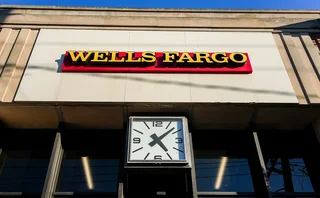
Project Colin: why Goldman-led margin hub fell apart
The world’s big dealers quietly started work on a new swaps market utility last year, dubbed Project Colin. The aim was to control the vast collateral flows arising from incoming bilateral margining rules, but the consortium has since fallen apart, and a coalition of middleware and back-office firms have stepped into the breach

Nothing imbues glamour like a top-secret project with a mysterious codename, so when collateral managers at the big swap dealers started work on a new margining utility last year, it was a chance to cloak themselves, for a while, in a little intrigue.
They called it Project Colin.
It was a missed opportunity, because the sensitivity around the project is real, and the stakes are high. The aim of the hub was to control the huge new collateral flows that will result from incoming rules on
Only users who have a paid subscription or are part of a corporate subscription are able to print or copy content.
To access these options, along with all other subscription benefits, please contact info@risk.net or view our subscription options here: http://subscriptions.risk.net/subscribe
You are currently unable to print this content. Please contact info@risk.net to find out more.
You are currently unable to copy this content. Please contact info@risk.net to find out more.
Copyright Infopro Digital Limited. All rights reserved.
As outlined in our terms and conditions, https://www.infopro-digital.com/terms-and-conditions/subscriptions/ (point 2.4), printing is limited to a single copy.
If you would like to purchase additional rights please email info@risk.net
Copyright Infopro Digital Limited. All rights reserved.
You may share this content using our article tools. As outlined in our terms and conditions, https://www.infopro-digital.com/terms-and-conditions/subscriptions/ (clause 2.4), an Authorised User may only make one copy of the materials for their own personal use. You must also comply with the restrictions in clause 2.5.
If you would like to purchase additional rights please email info@risk.net
More on Markets
CLO market shakes off ETF outflows
Despite record redemptions, exchange mechanics and relatively small volumes cushioned impact
Pension funds hesitate over BoE’s buy-side repo facility
Reduced leveraged and documentation ‘faff’ curb appetite for central bank’s gilt liquidity lifeline
Wells Fargo’s FX strategy wins over buy-side clients
Counterparty Radar: Life insurers looked west for liquidity after November’s US presidential election
How BrokerTec, MarketAxess fared during Treasury rout
Electronic bond trading platforms see spike in volumes and small growth in market share, Risk.net analysis shows
Tariff volatility pushes banks to tighten close-outs
Lawyers say dealers are looking to update playbooks for terminating derivatives trades
Dodging a steamroller: how the basis trade survived the tariff tantrum
Higher margins, rising yields and stable repo funding helped avert another disruptive blow-up
SG’s Ungari swaps research for structuring in new QIS role
Veteran researcher and strategist ‘putting things into action’ with new remit
Yen rates losses from tariff volatility top $1 billion
Pay fixed, curve flattener and vol steepener positions were hit hard as yields swung wildly







